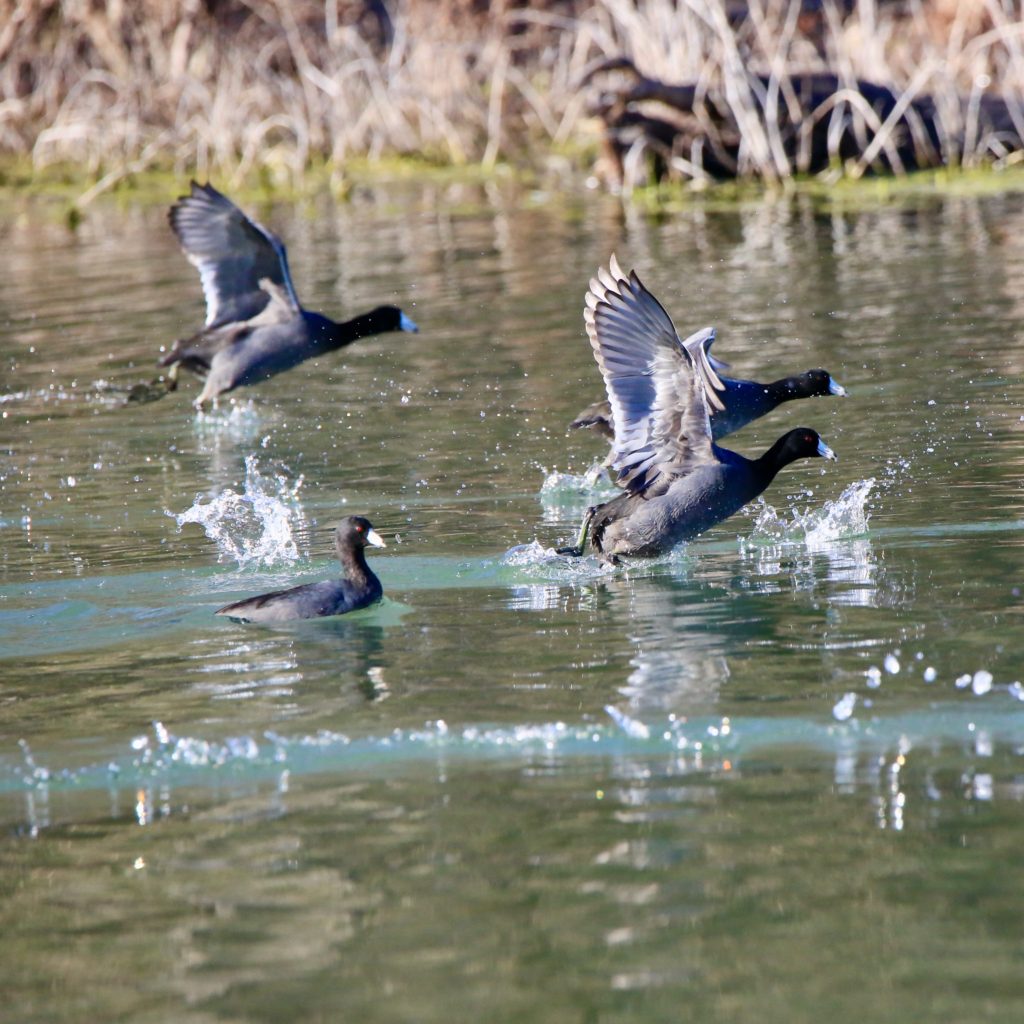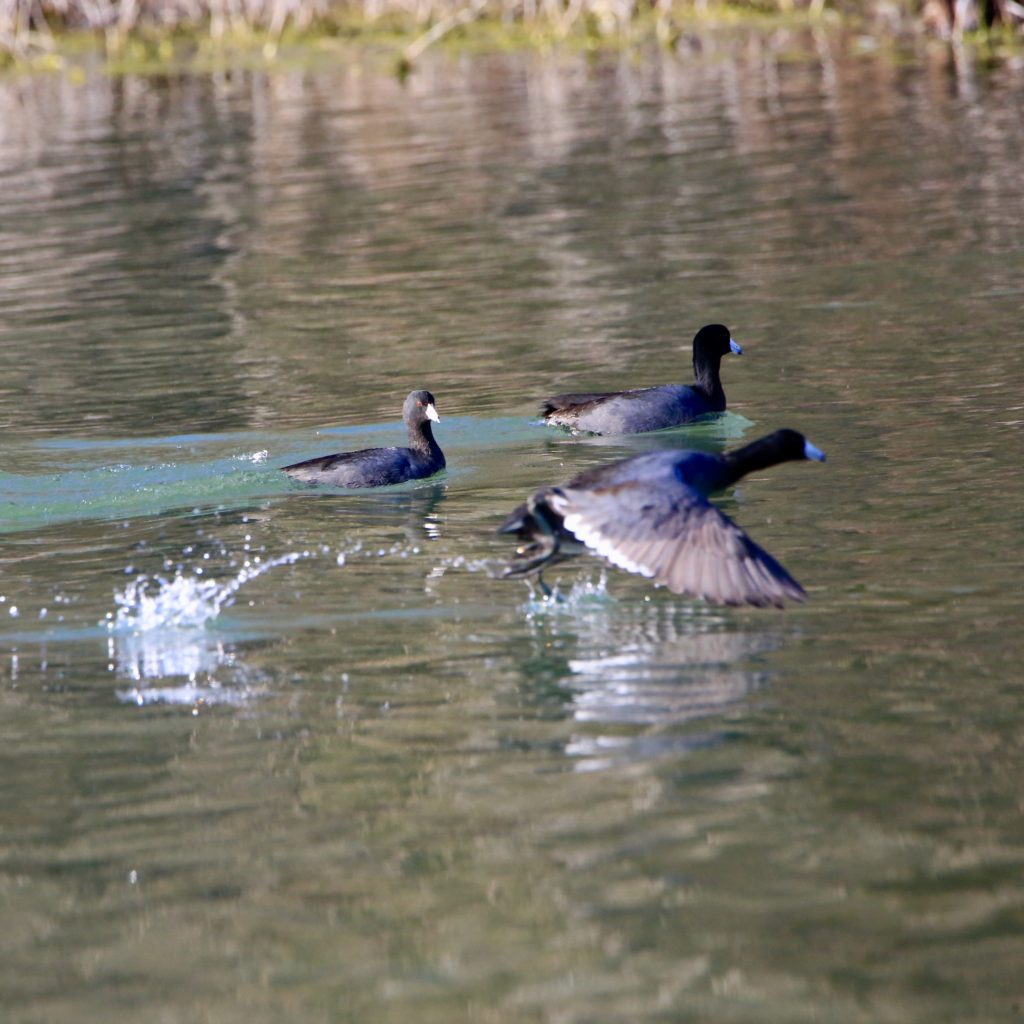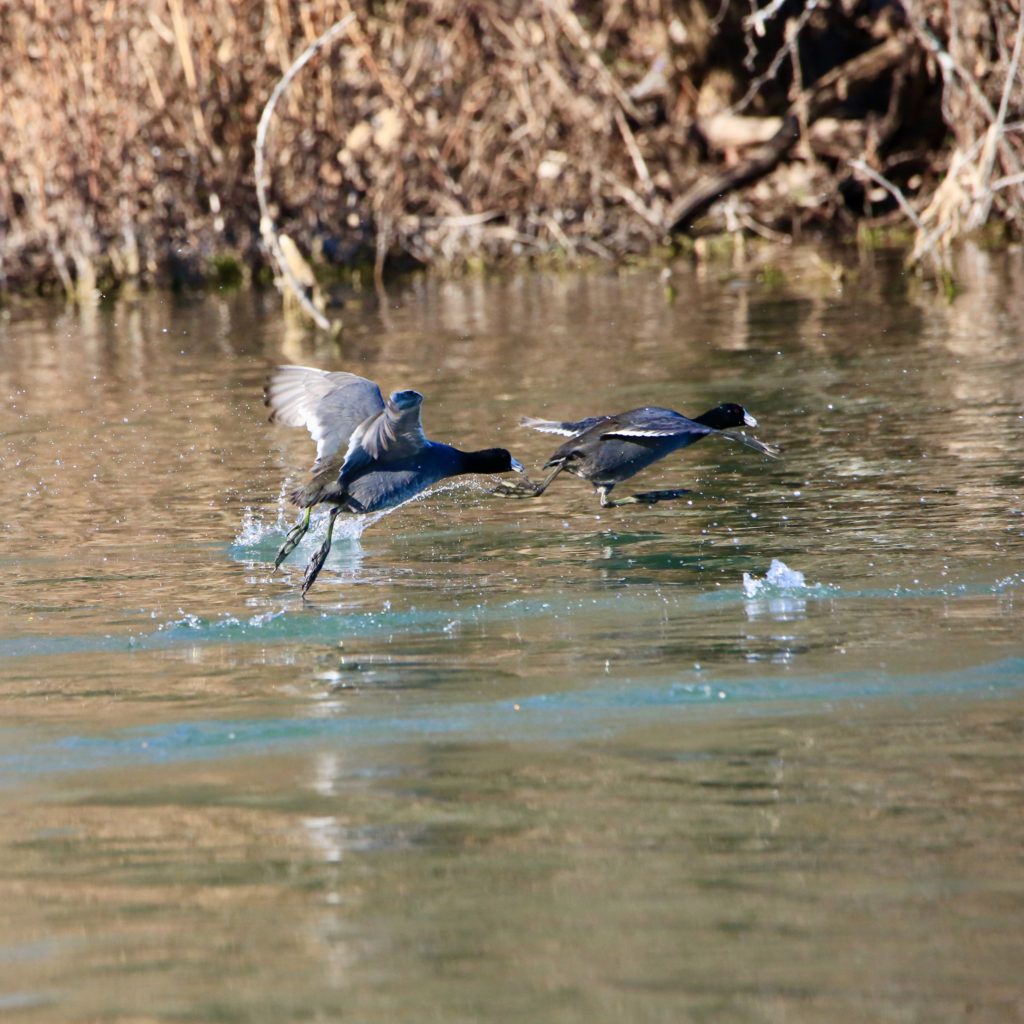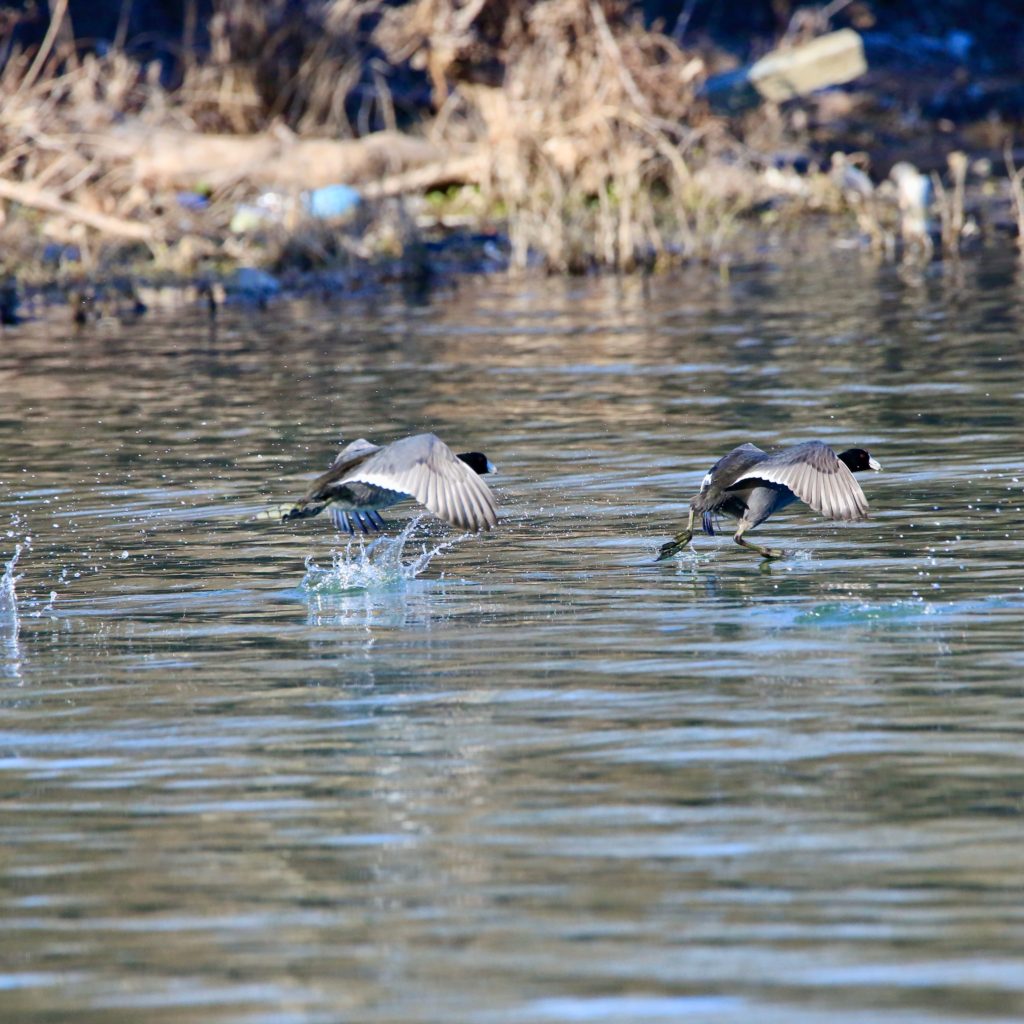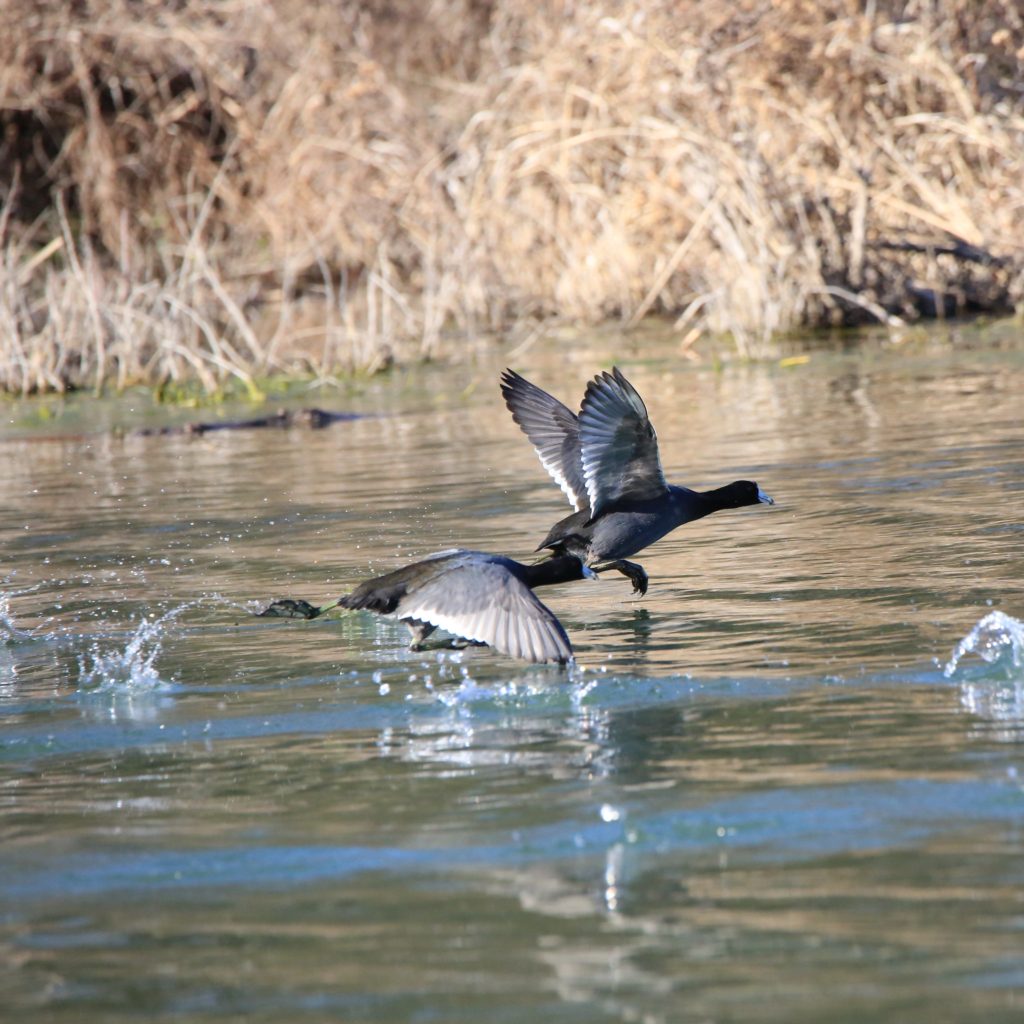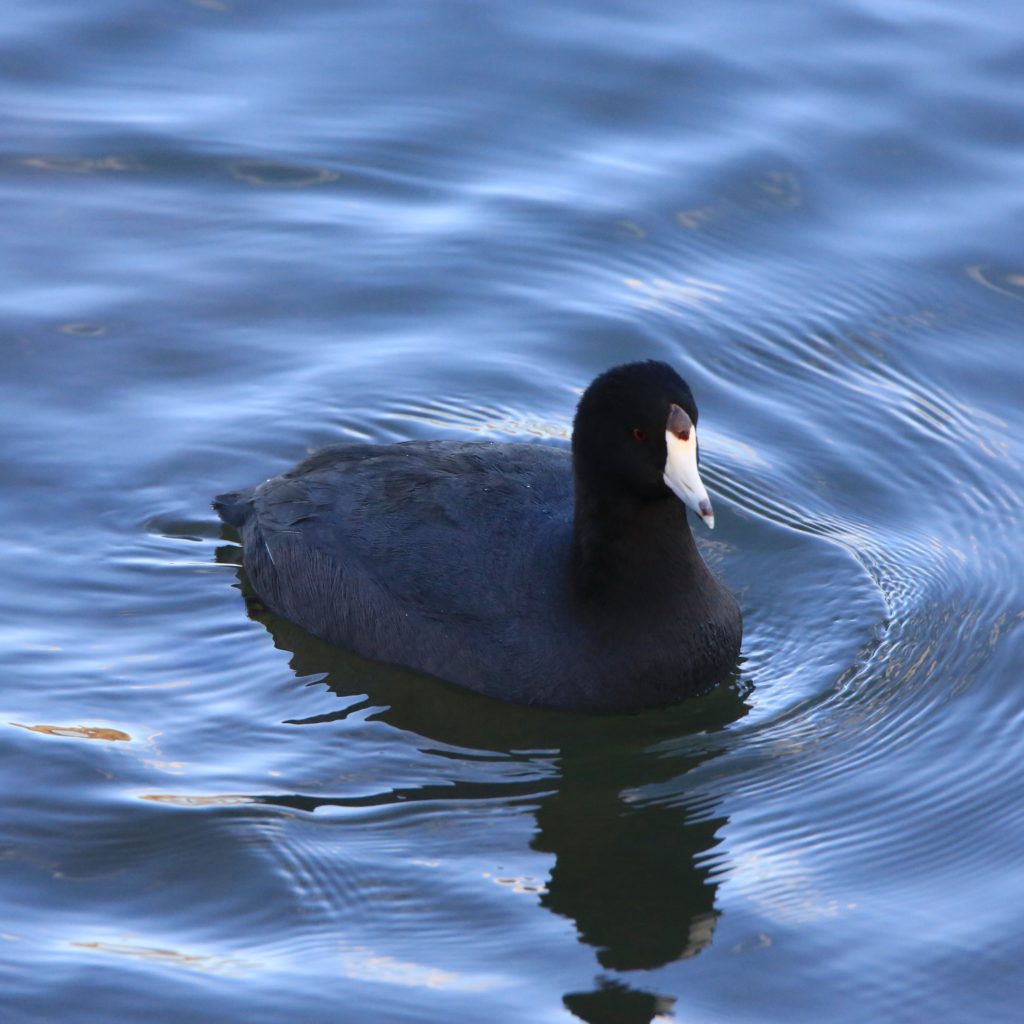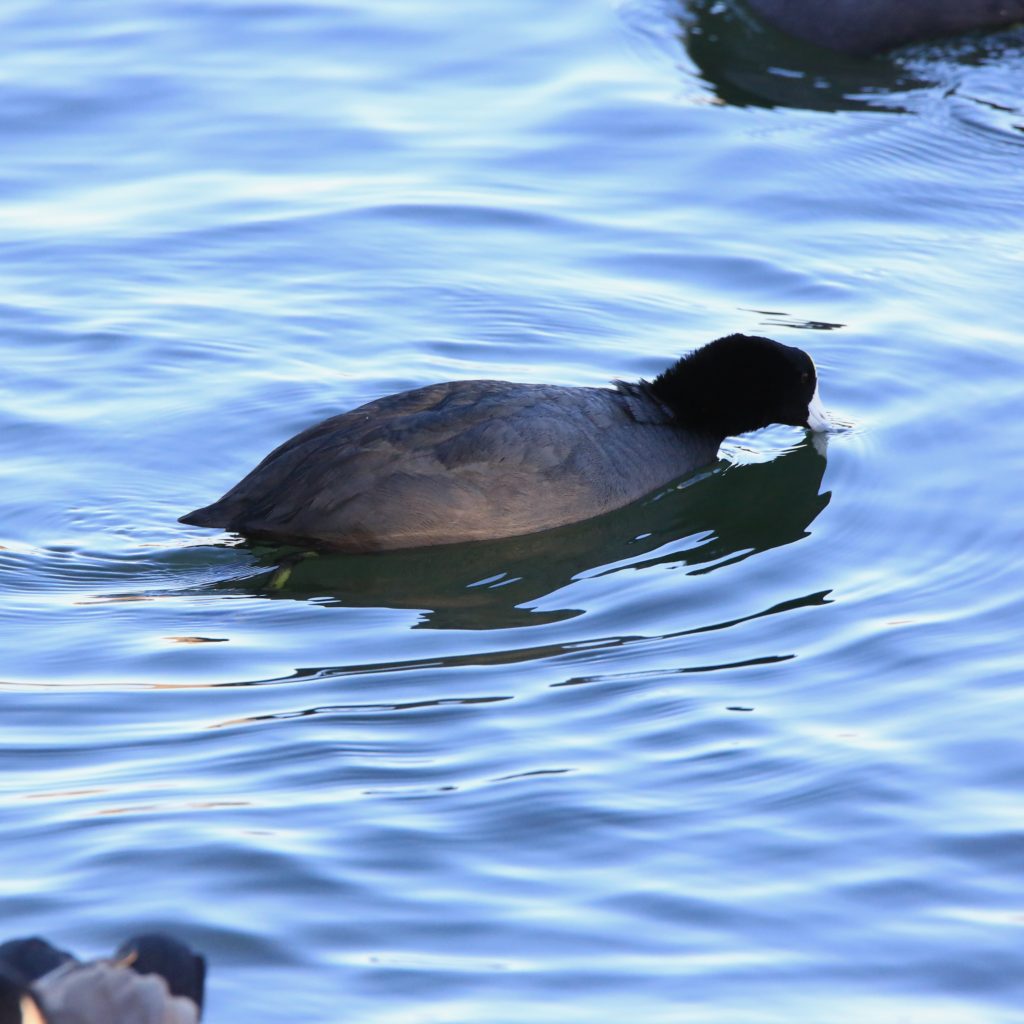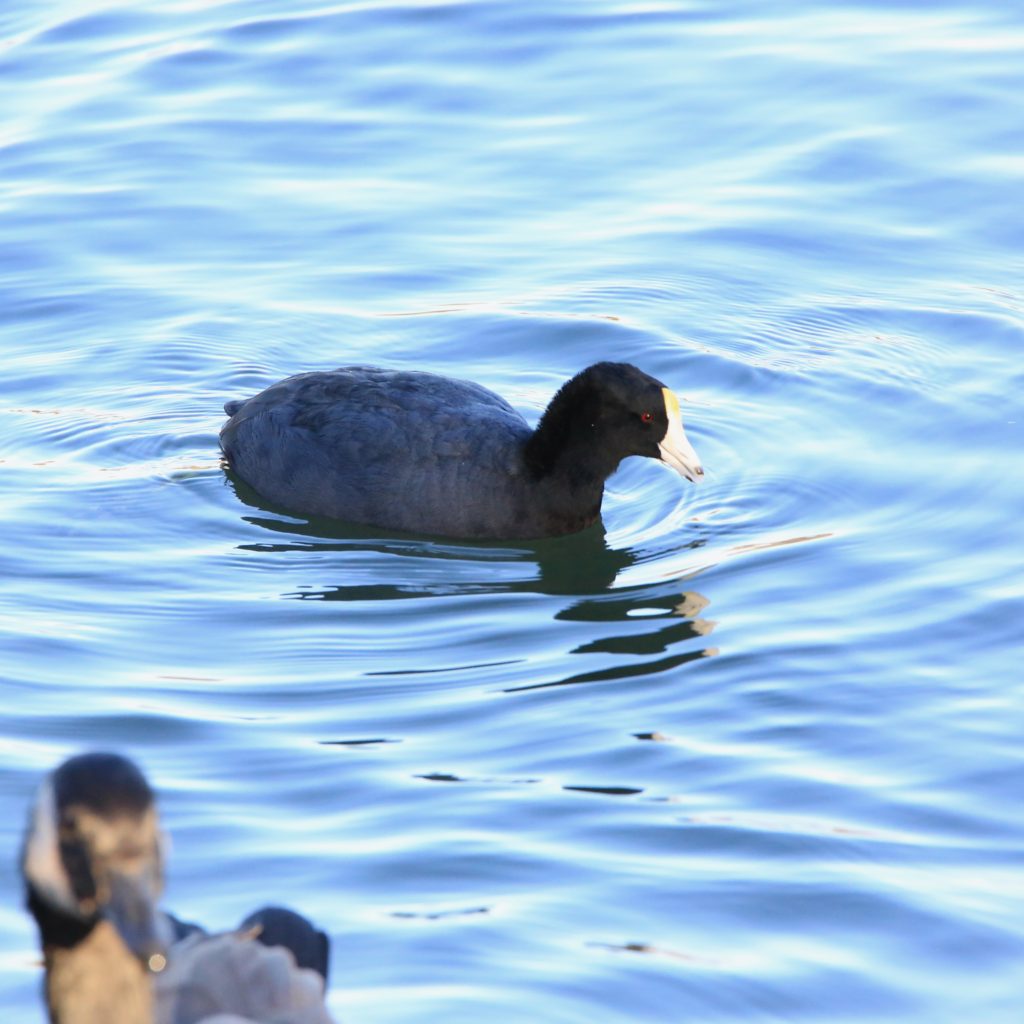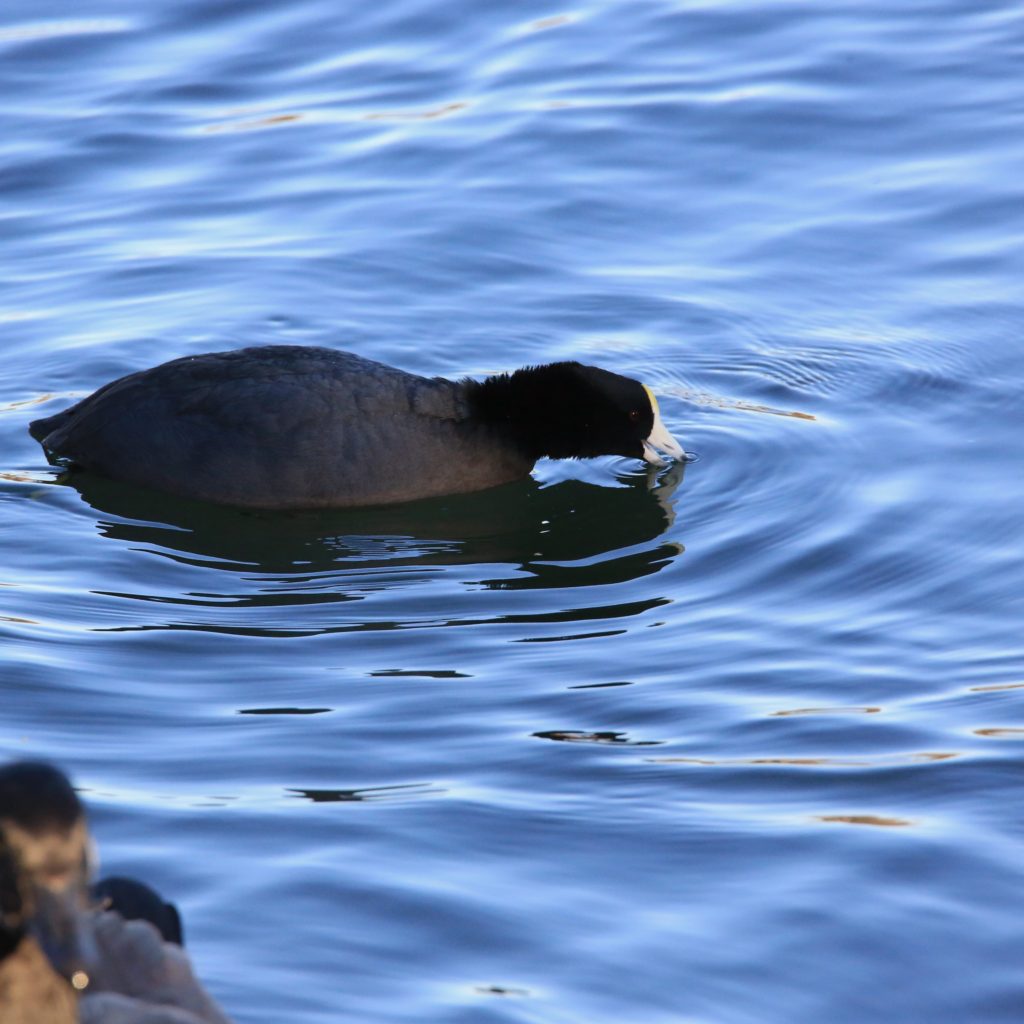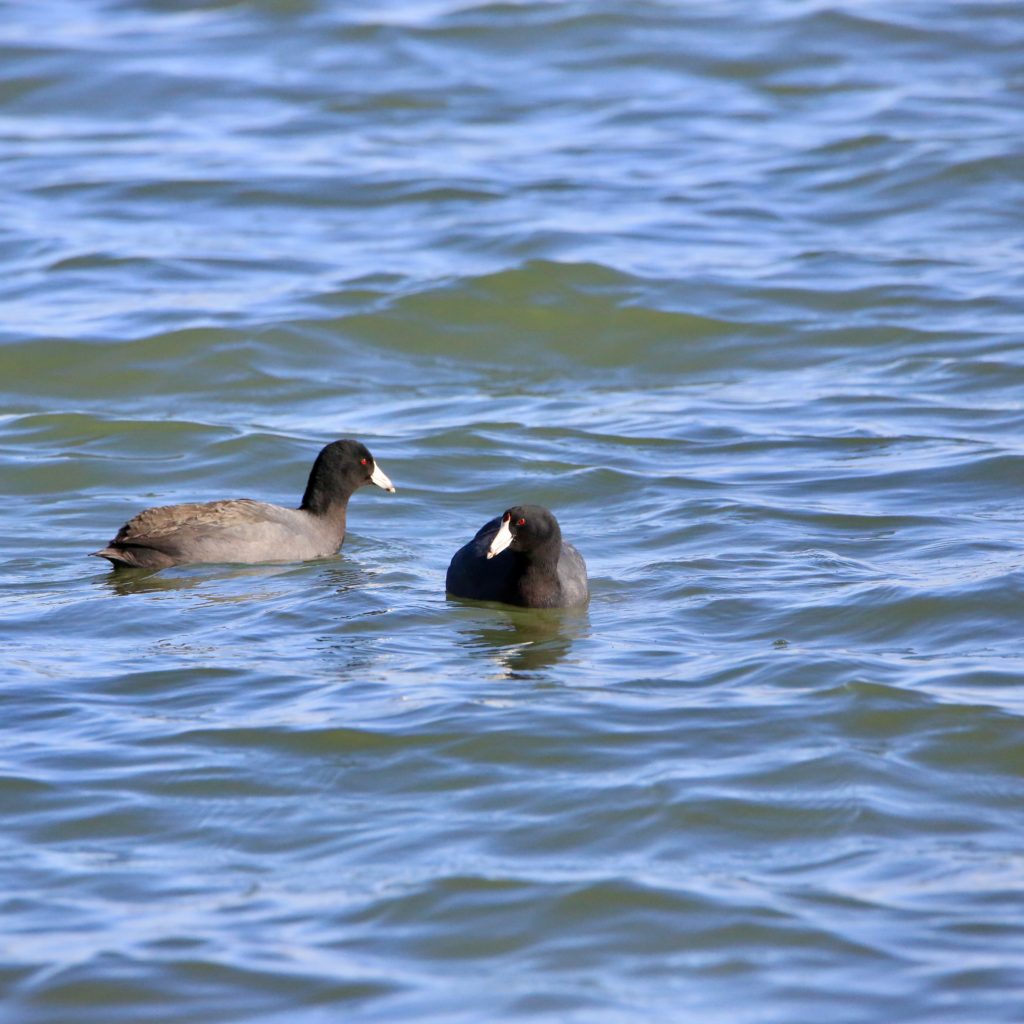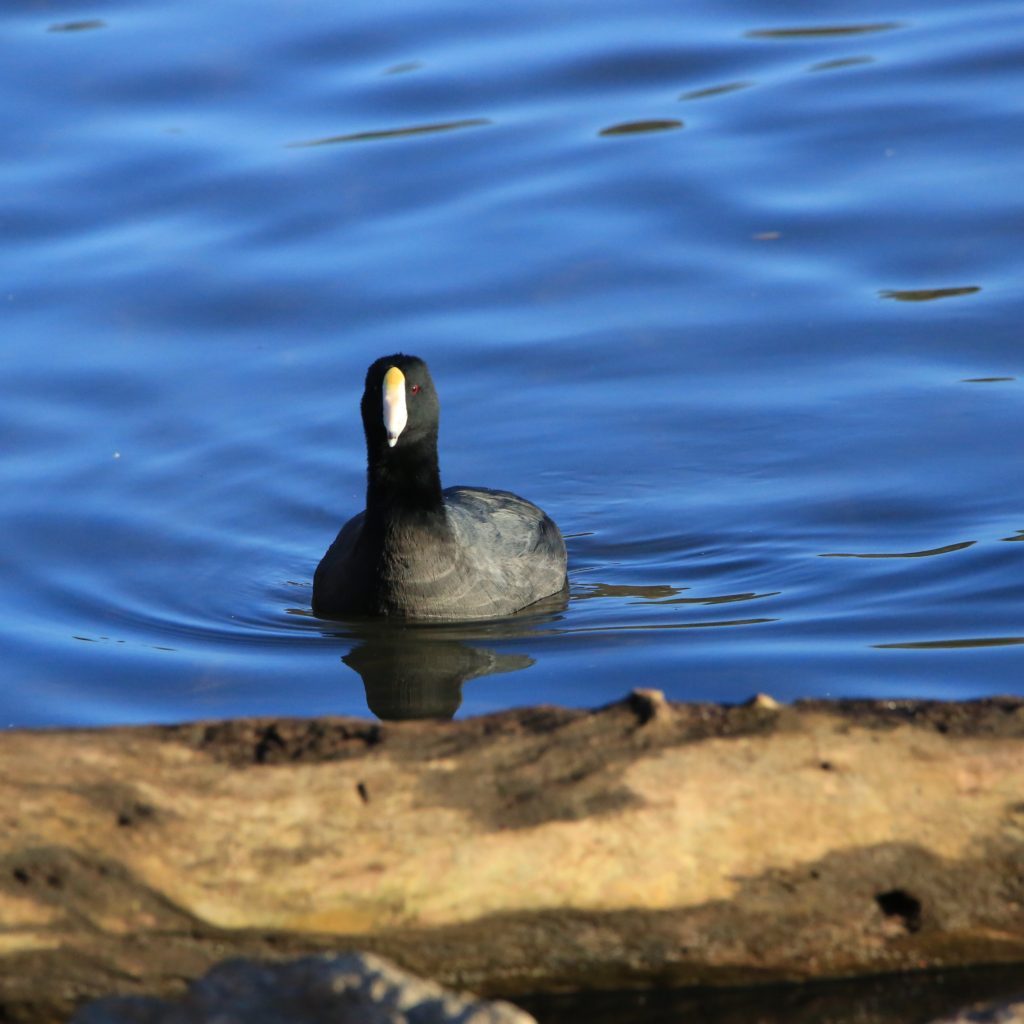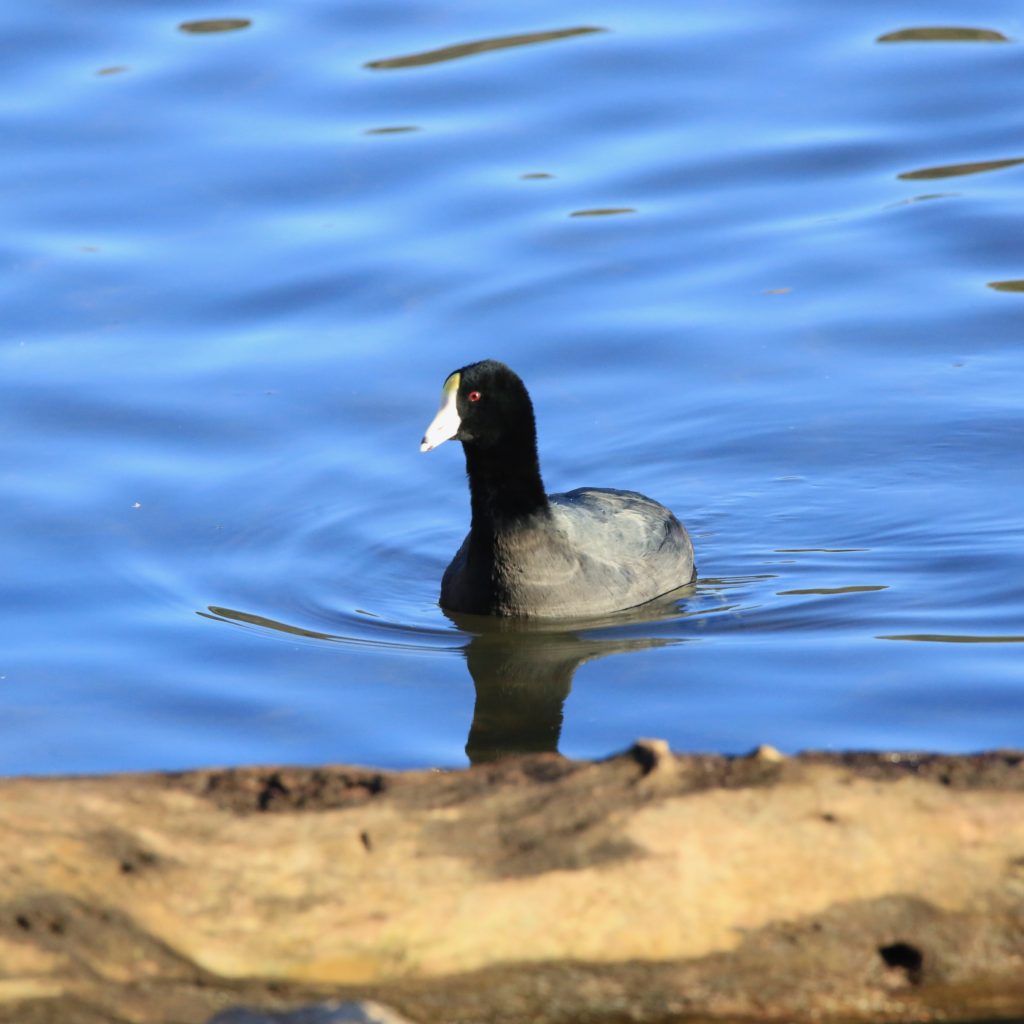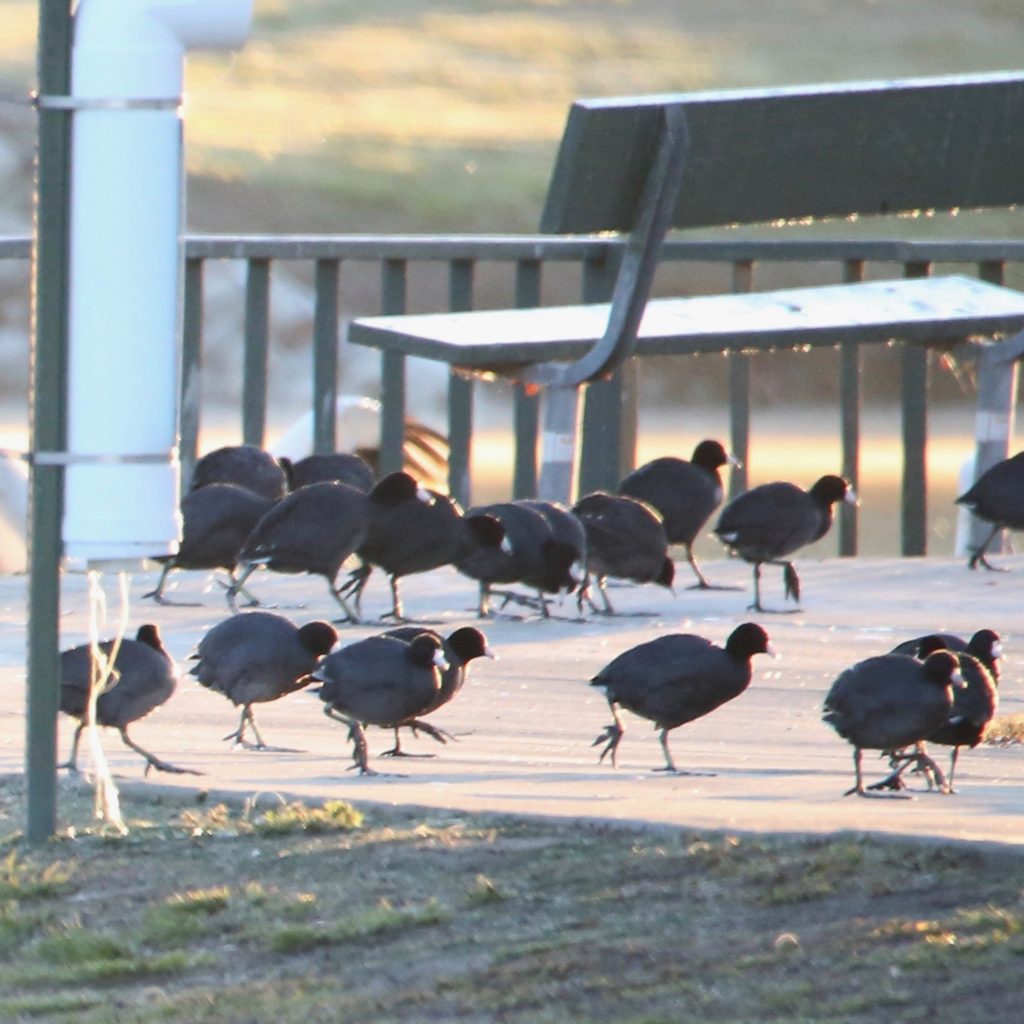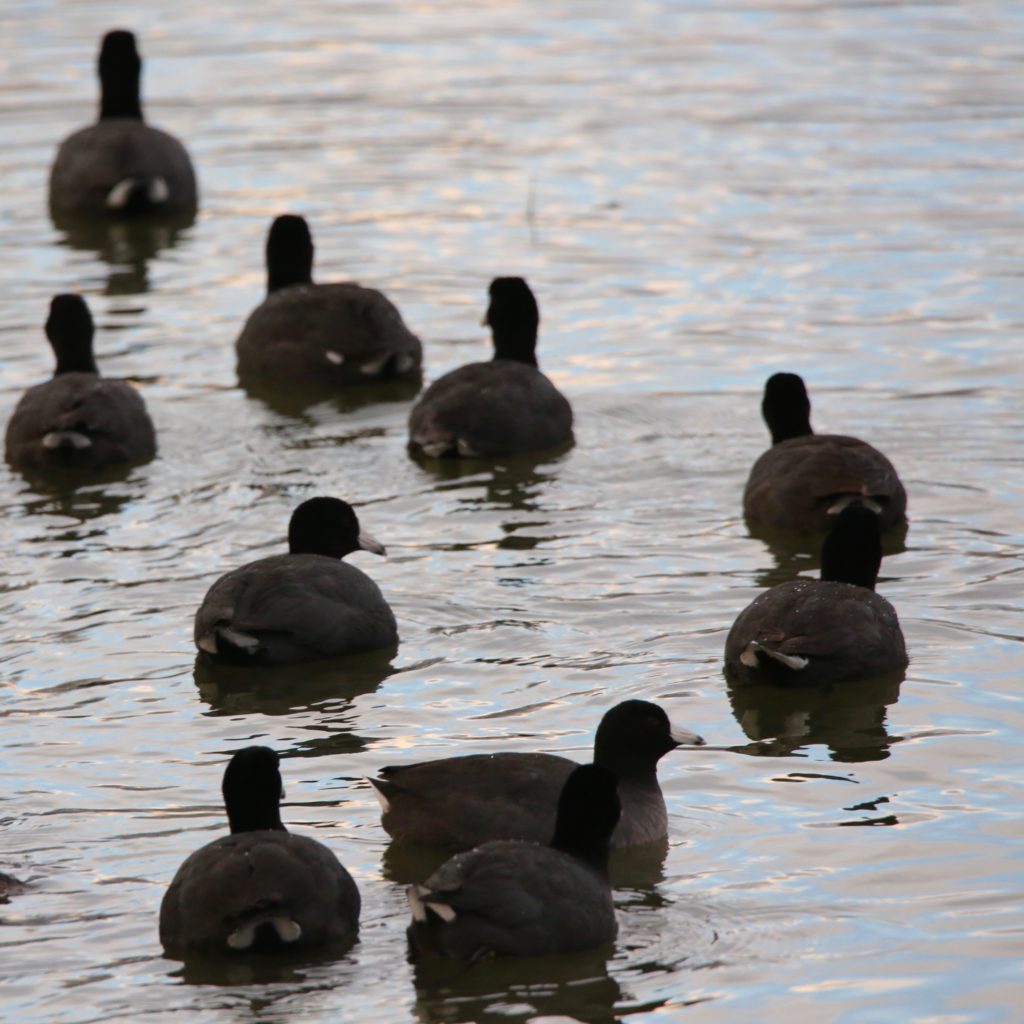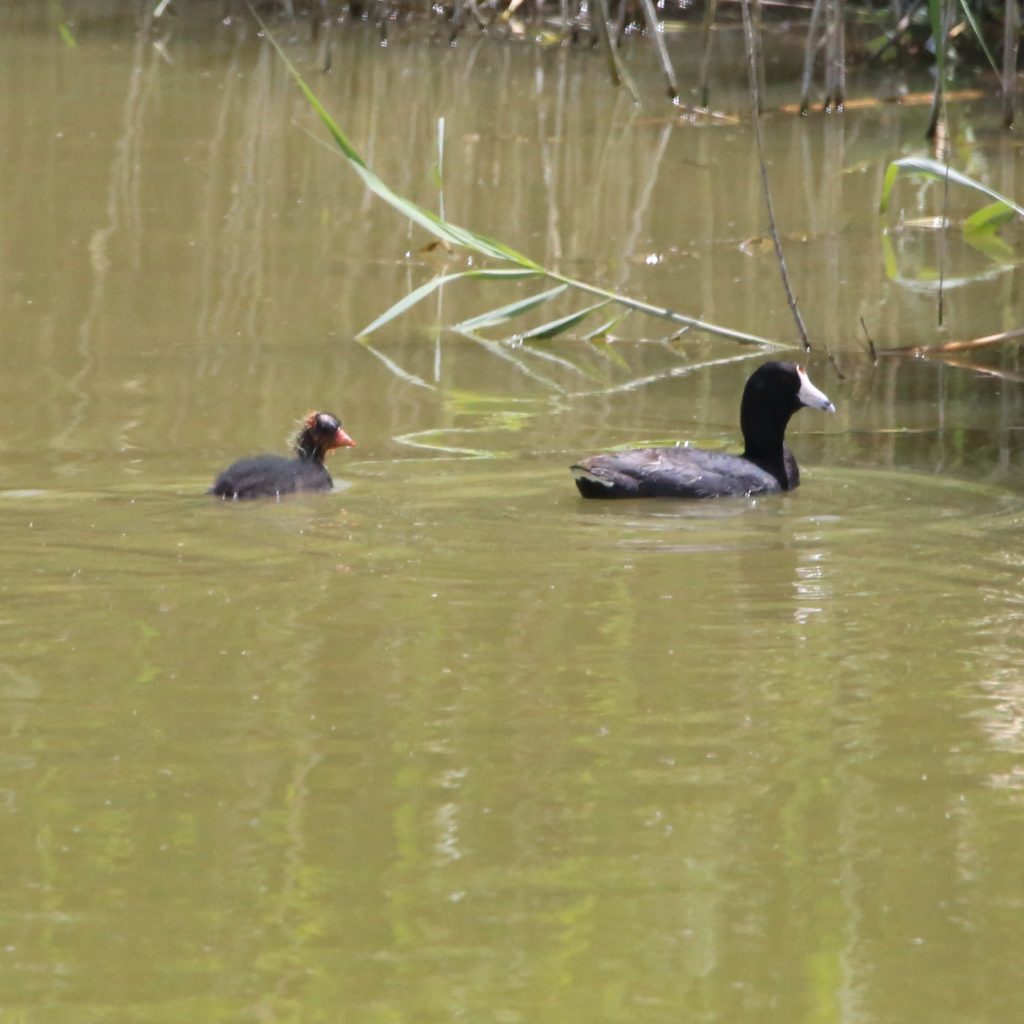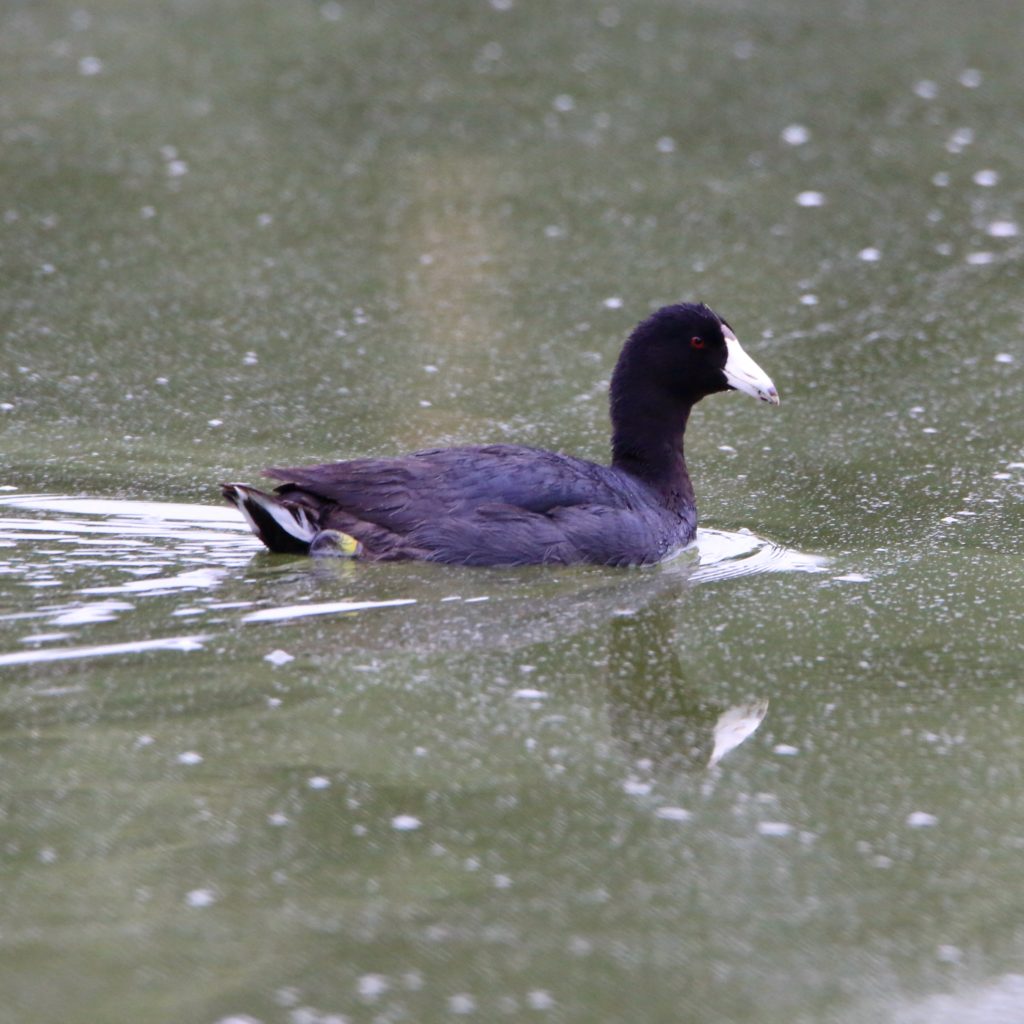
An American Coot is a fun bird to see while bird watching. Below are some tips to help you identify American Coots. We have also put together a list of fun American Coot t-shirts, American Coot bird patches, birdhouses, bird feeders, binoculars, stickers, and other fun bird-watching items.
About the American Coot
Although they swim like Ducks, American Coots do not have webbed feet. Instead, each of their long toes has broad lobes of skin. These lobes help them to kick through the water. They are noisy and aggressive and usually attack each other with their strong legs and big feet when fighting. Some of their distinctive features include:
Description and Identification
At first glance, American Coots can easily be mistaken for ducks, but looking closely at their small heads and scrawny legs can reveal entirely different birds. These birds specifically lack the webbed feet that ducks possess. American Coots are 13-17 inches long, with a wingspan of 23-28 inches. Like most other birds, these birds also display sexual dimorphism with the males being larger than the females. American Coots have a distinctive dark red spot at the top of their bills between their eyes. Their plumage is generally entirely black, except for a white patch under their tail. They have short and wide, white bills with a small black spot near the tip. Younglings have a gray body with olive-brown crowns. It takes 4 months for younglings to gain the color of the adults. American Coots are intelligent birds that can make a variety of different sounds to communicate amongst themselves.
American Coot Color Pattern
They are primarily dark gray with black upper parts and underparts. Their eyes are brown with flecks of red and a white bill and forehead. The legs are yellow-green to olive green.
American Coot Size
They are larger than a robin but dwarfed by a crow. They are plump with a sloping bill and a rounded head. They have tiny wings and large feet that are visible during flight. Both sexes are between 15.5 and 16.9 inches in length. They weigh 21.2-24.7 ounces and have a wingspan of 23-25 inches.
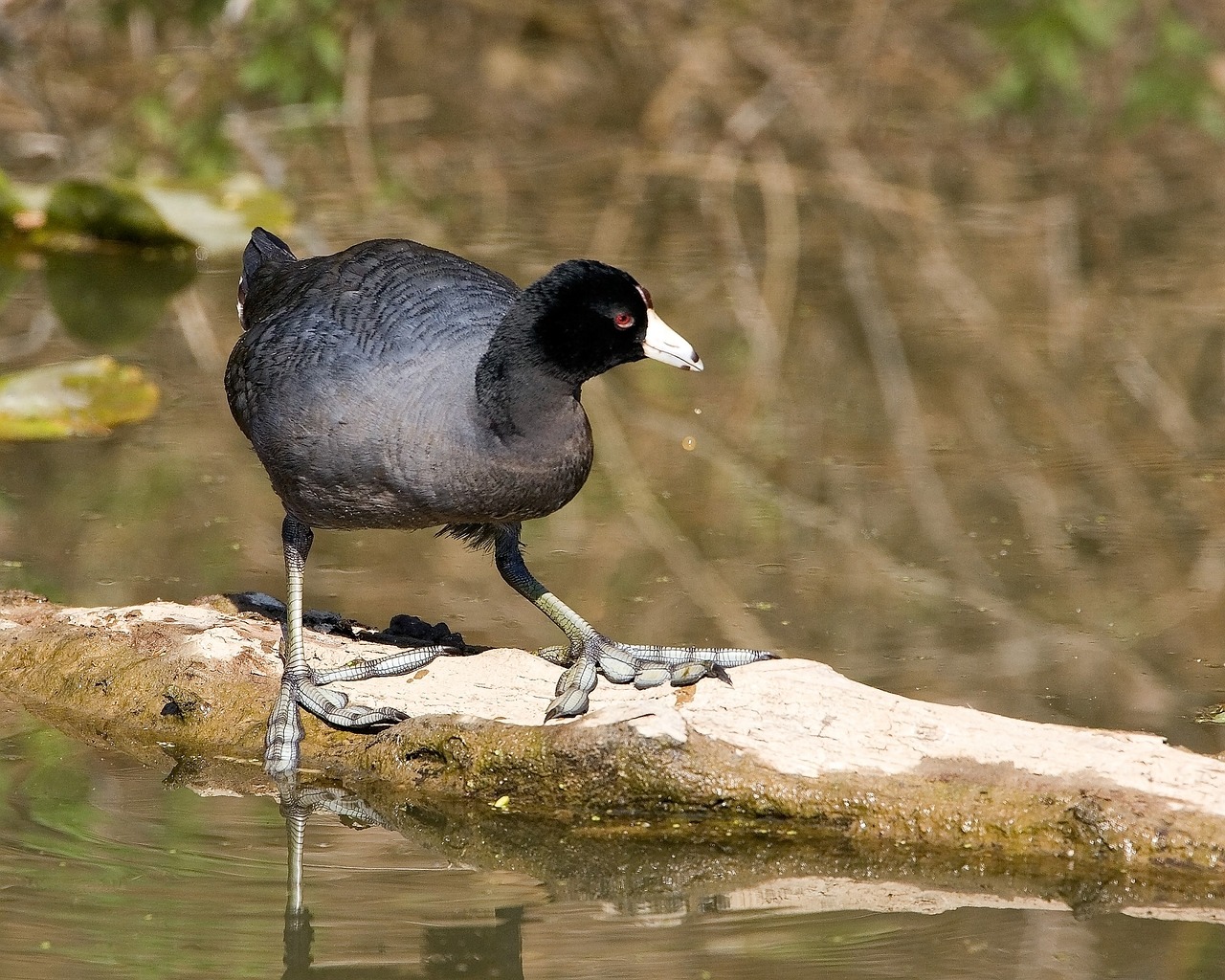
American Coot Behavior
American Coots feed through various methods such as dabbling at the water surface and diving. When swimming they resemble ducks but on land, they resemble chickens where they walk rather than wade. They graze while on land and sometimes steal food from ducks. They require pattering across the water or long-running to get airborne.
American Coot Diet
American Coots are omnivores that mainly feed on insects, aquatic animals, and vegetation. They use their diving abilities to fetch plants growing at the bottom of the lakes and ponds. After pulling out these plants, they consume the edible portions and discard the rest. The plants they eat include hydrilla, wild celery, watermilfoil, and eelgrass. Occasionally, American Coots also eat grains or leaves of oak and elm trees when they are on land. Crustaceans, snails, and small vertebrates make up the animal portion of their diet.
They are omnivorous feeding on plant materials such as leaves, stems, grasses, sedges, and also eat insects, fish, snails, worms, tadpoles, and eggs of other birds.
American Coot Habitat
American Coots prefer freshwater environments such as lakes and ponds. These birds are generally found in regions with emergent vegetation near waters that also have enough depth for diving. This might not be the case in some regions that are facing a drought. During winter, American Coots are found in saltwater marshes and brackish waters.
American Coots can be found in city ponds, swamps, along edges of lakes, in marshes and in saltmarshes, roadside ditches, and sewage treatment ponds.
Range and Migration
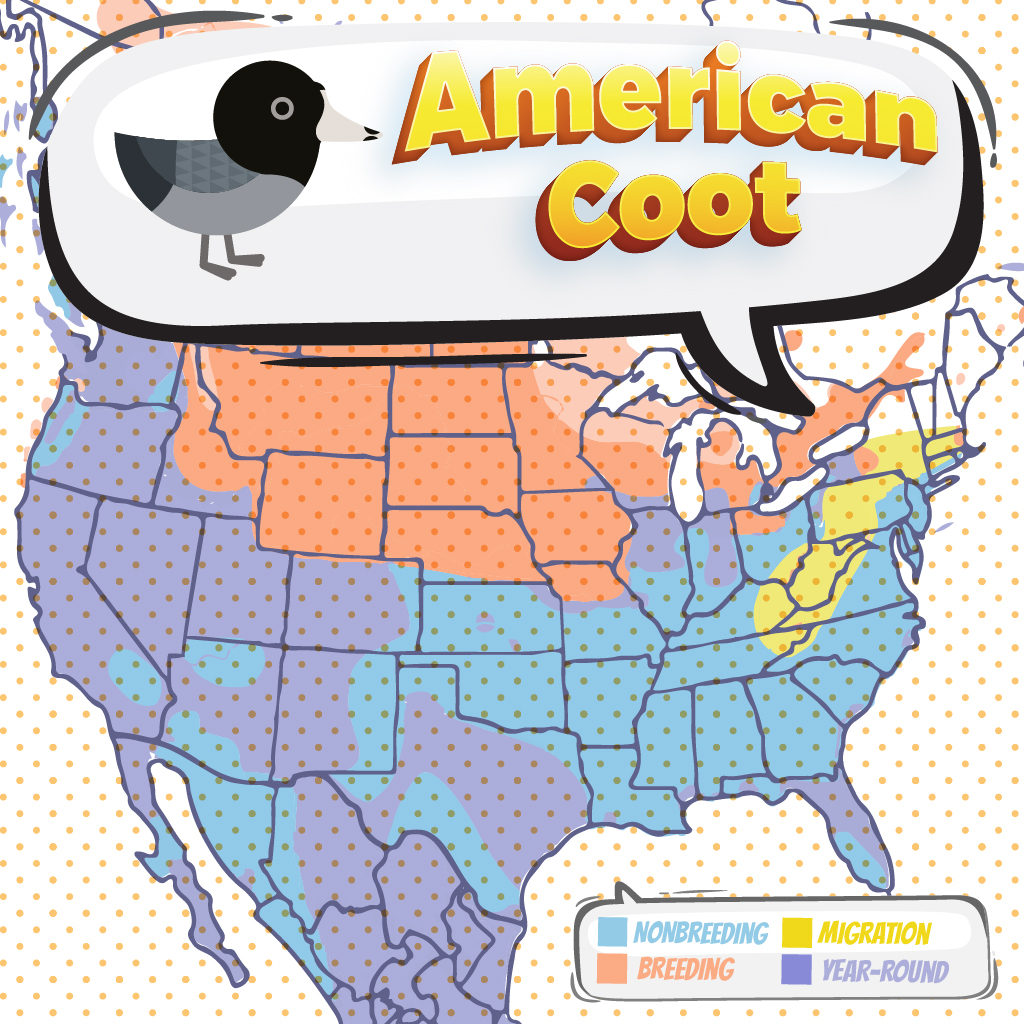
American Coots are tough, adaptive birds that are abundantly found in North America. During the summer season, they can be found in northeastern regions, whereas they are otherwise found in the Pacific, Mexico, and southwestern U.S. They migrate southwards during winters, sometimes traveling as far south as Panama. Most American Coots never stray farther than the border of North America during migration.
American Coot Lifecycle
The females lay 6-11 eggs and both the male and the female incubate them for 21-25 days. After hatching, the young ones can swim while following their parents. Both parents feed them at this stage. They fledge after 7-8 weeks of hatching. Their lifespan is 9 years in the wild.
Nesting
American Coots have a very interesting mating ritual in which both males and females begin displaying themselves to each other. While splashing about in the water, they make repetitive calls to each other. When the time comes for mating, they move to dry land where the female assumes a submissive posture inviting the male for sex. American Coots build their nests on floating platforms near emergent vegetation such as grasses, cattails, and bulrushes. Although the nest is mostly safely hidden, sometimes it can be situated at the edge of vegetation where it can clearly be spotted. Both members of the pair were given equal attention to the eggs and the young. After the female lays 8-10 eggs, both males and females take turns in the process of incubation which lasts for approximately 23 days. The parents divide nestlings between them, taking about a month to teach them how to dive for their own food.
Ornithology
Bird Watching Academy & Camp Subscription Boxes
At the Bird Watching Academy & Camp we help kids, youth, and adults get excited and involved in bird watching. We have several monthly subscription boxes that you can subscribe to. Our monthly subscription boxes help kids, youth, and adults learn about birds, bird watching, and bird conservation.
- Kids Bird Watching Monthly Subscription$10.00 / month
- Kid & Adult Bird Watching Starter Pack Subscription$10.00 / month and a $72.00 sign-up fee
- Kids Bird Watching Starter Pack Subscription$10.00 / month and a $19.00 sign-up fee
Bird Watching Binoculars for Identifying American Coots
The most common types of bird watching binoculars for viewing American Coots are 8×21 binoculars and 10×42 binoculars. Bird Watching Academy & Camp sells really nice 8×21 binoculars and 10×42 binoculars. You can view and purchase them here.
- Birding Binoculars$49.99
- Kids Binoculars$13.99
American Coot T-shirts
If you love the American Coot you should purchase a Bird Watching Academy & Camp T-shirt. To help support bird conservation we donate 10 percent to bird conservation activities.
American Coot Stickers
Stickers are a great way for you to display your love for bird watching and the American Coot. We sell a monthly subscription sticker pack. The sticker packs have 12 bird stickers. These sticker packs will help your kids learn new birds every month.
Bird Feeders For American Coot
There are many types of bird feeders. Bird feeders are a great addition to your backyard. Bird feeders will increase the chances of attracting birds drastically. Both kids and adults will have a great time watching birds eat at these bird feeders. There are a wide variety of bird feeders on the market and it is important to find the best fit for you and your backyard.
Best Bird Houses for American Coot
There are many types of bird houses. Building a bird house is always fun but can be frustrating. These 4 bird houses have become our favorites. Getting a bird house for kids to watch birds grow is always fun. We spent a little extra money on these bird houses but they have been worth the higher price and look great.


